If you are a follower of my work and this blog, you’ll know that I tend to combine my love of history with my love of photography. And when I learned that the FP4Party was coming back in 2020, I made a plan to shoot four rolls over four days and just keep it random such as what I had always done in the past. But sometimes things and situations change and suddenly the weekend of the FP4Party shoot week became busy with some family matters calling my attention. I had to sit back down at the drawing board and figure out a new plan, a better plan. And in looking at my Hometown Project which launched this week and my 1867 that ended at the end of last month, I figured out how to approach the FP4Party this month. The town of Oakville got a brief mention in an early post in the 1867 project. As an example of how William Chisholm got the appointments and land that he wanted by switching his alliance from the Reformers to the Tory Family Compact. And then it hit me, what about a short project about Oakville, and tie it right into the FP4Party. Perfect. I went and got three rolls of FP4+ from Burlington Camera, and shot over the course of the shoot week Monday, Wednesday, and Friday. Splitting the historic core into three sections, Kerr Street to the Habour, The Harbour to Trafalgar Road, then Trafalgar Road itself north to Speers. My goal was to not just focus on historic structures in the area, but also details and scenes along the way. My camera of choice is the Minolta Maxxum 9 along with the 28, 50, and 100mm primes along with the 70-210 beer-can. Shot all the rolls at box speed and processed them all at once using Pyrocat-HD. The area that the current city of Oakville occupies is far from its historical roots. The first European expansion into the area came in 1793 shortly after the creation of Upper Canada in the aftermath of the American Revolutionary War. The Dundas Road pushed west from the Provincial Capital of York, carving a route in the wilderness. And British Indian Department Agents began to negotiate treaties to purchase land from the various indigenous tribes that occupied the land. Small settlements would spring up along the Dundas Road. Following the Anglo-American War of 1812, the Crown began a vast land-grab in the region, purchasing vast tracts of land along the Twelve Mile and Sixteen Mile Creek from the Mississaugas of the Credit. This land grab between 1818 and 1820 resulted in several settlements being founded in what was known as the Gore District. Among those vying for land, William Chisholm, the one-time agent of the Reform Mouthpiece, the Colonial Advocate. Chisholm found his efforts to gain status in the province hampered by his alliance with the agitator, William Lyon MacKenzie. When Chisholm parted ways, he soon found himself in possession of a prime natural harbour on Lake Ontario at the mouth of the Sixteen Mile Creek. He also gained a commission as Colonel in the local branch of the Gore Militia.

Minolta Maxxum 9 – Minolta Maxxum AF 50mm 1:1.7 – Ilford FP4+ @ ASA-125 – Pyrocat-HD (1+1+100) 20:00 @ 20C
Minolta Maxxum 9 – Minolta Maxxum AF 50mm 1:1.7 – Ilford FP4+ @ ASA-125 – Pyrocat-HD (1+1+100) 20:00 @ 20C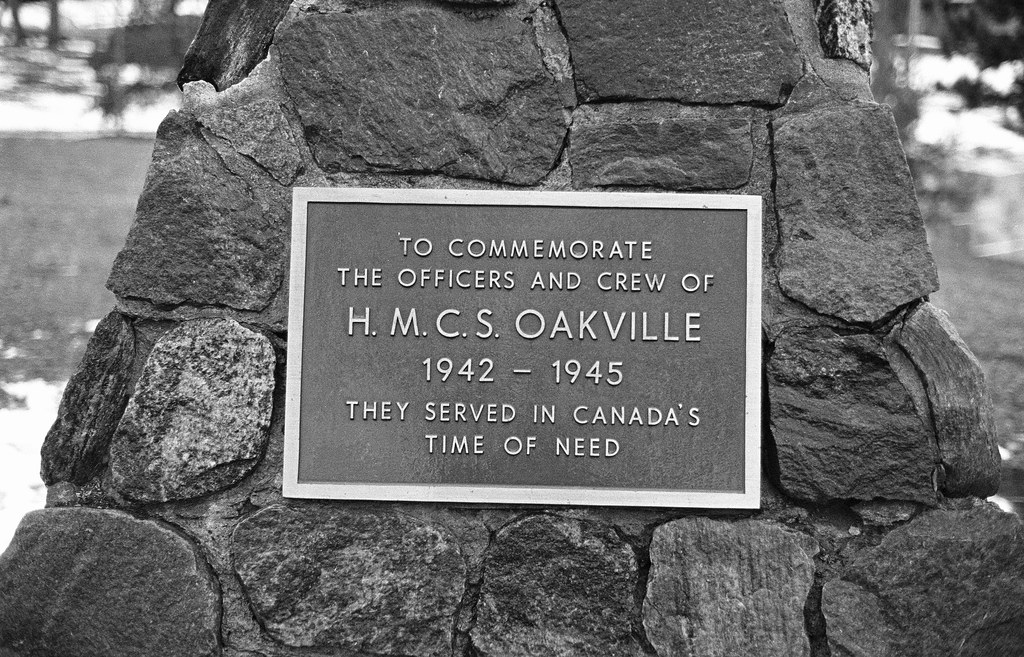
Minolta Maxxum 9 – Minolta Maxxum AF 50mm 1:1.7 – Ilford FP4+ @ ASA-125 – Pyrocat-HD (1+1+100) 20:00 @ 20C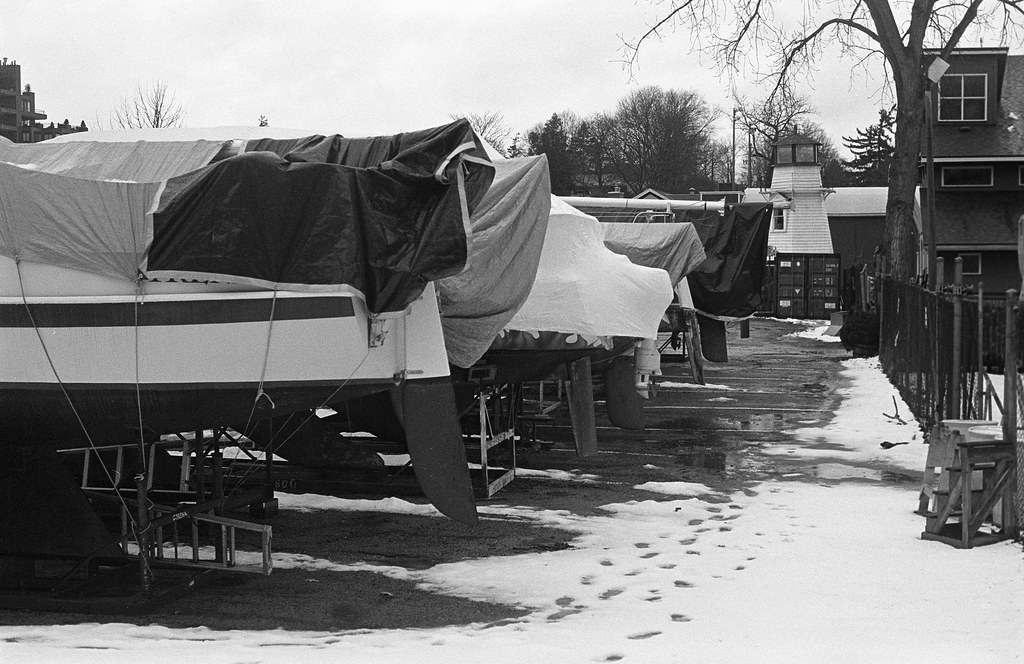
Minolta Maxxum 9 – Minolta Maxxum AF 50mm 1:1.7 – Ilford FP4+ @ ASA-125 – Pyrocat-HD (1+1+100) 20:00 @ 20C
Minolta Maxxum 9 – Minolta Maxxum AF 50mm 1:1.7 – Ilford FP4+ @ ASA-125 – Pyrocat-HD (1+1+100) 20:00 @ 20C
The core of Oakville began with that 960-acre land purchase by Chisolm. William would leave much of the development of the town to his son, Robert Kerr Chisholm and brother-in-law Merrick Thomas. But William did not stay far away, he established the village’s first business, a shipyard in the natural harbour. William also sat as one of the representatives for Halton County on the Legislative Assembly. William envisioned Oakville as being a major port on Lake Ontario allowing the flow of agricultural goods to flow south along the Sixteen Mile Creek from the other small farming and mill communities along the creek, and out to the rest of the Province. But Oakville’s place flourished and it became an official port of entry into British North America in 1834. William would be named Post-Master and Customs Inspector for the port. Oakville remained a Tory Stronghold during the Upper Canada Rebellion of 1837, and while William Lyon MacKenzie nearly saw capture along the Dundas Road at the village of Sixteen, he never ventured south into Chisholm’s village. William would die in 1842. His son Robert taking on his father’s role as Customs Inspector and Post-Master. By 1846 Oakville boasted a population of 1500, three churches, two mills, and a booming shipyard. Despite the economic downturn of the 1850s, Oakville continued to thrive. The Great Western Railroad arrived in the early 1850s when they purchased the Hamilton and Toronto Railway, which opened up new methods of moving cargo across the Province and into American markets, which was boosted by the Reciprocity Treaty of 1854. In 1856, Robert completed a new brick Custom’s House and Branch of the Bank of Toronto. A year later Oakville saw incorporation as a Town and Robert’s brother, George King, was elected as the town’s first mayor. Robert would also complete his grand estate, Erchless in 1858. The estate is an expansion of his father’s original store and home from 1835. The name coming from the seat of the Chisholm family in Inverness-Shire, Scotland. But the one thing that would hurt the town’s pride was when it was not named as the seat of Halton County, that went to the small backwater town of Milton.

Minolta Maxxum 9 – Minolta Maxxum AF 50mm 1:1.7 – Ilford FP4+ @ ASA-125 – Pyrocat-HD (1+1+100) 20:00 @ 20C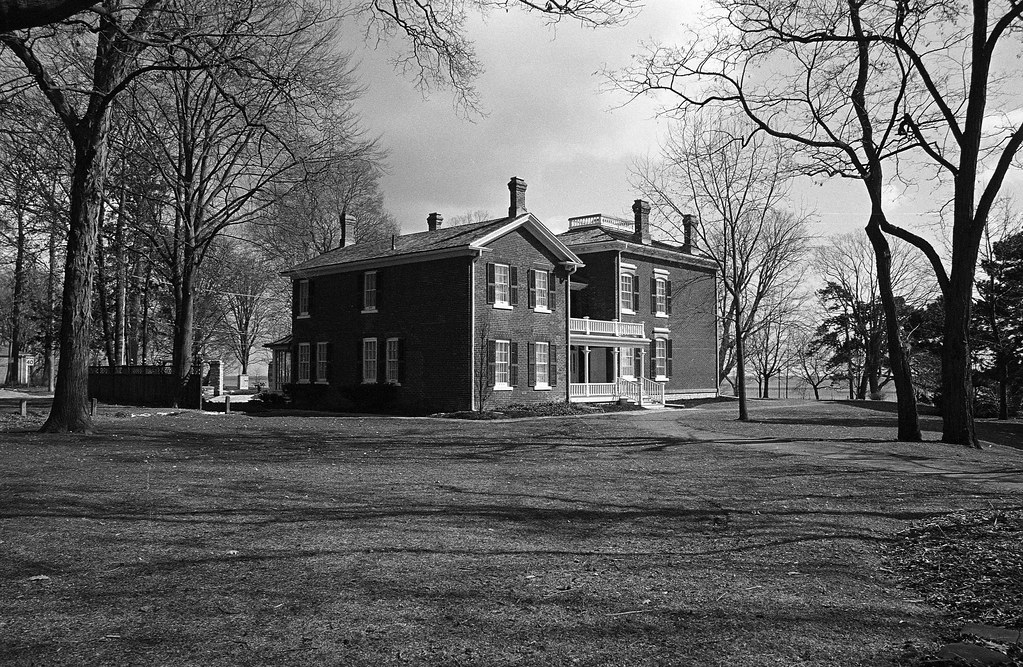
Minolta Maxxum 9 – Minolta Maxxum AF 28mm 1:2.8 – Ilford FP4+ @ ASA-125 – Pyrocat-HD (1+1+100) 20:00 @ 20C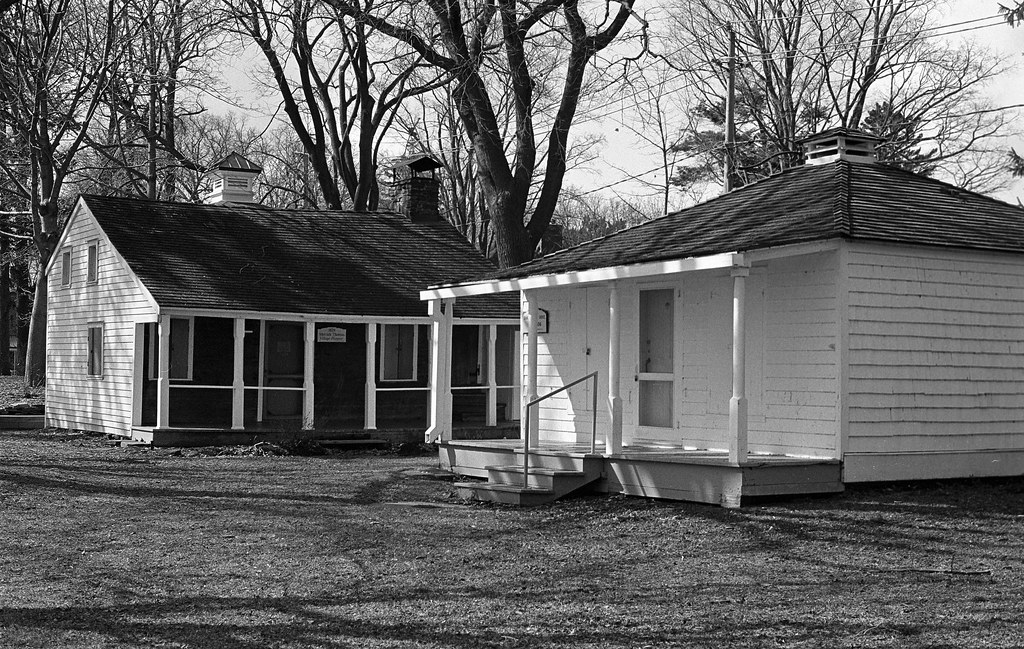
Minolta Maxxum 9 – Minolta Maxxum AF 28mm 1:2.8 – Ilford FP4+ @ ASA-125 – Pyrocat-HD (1+1+100) 20:00 @ 20C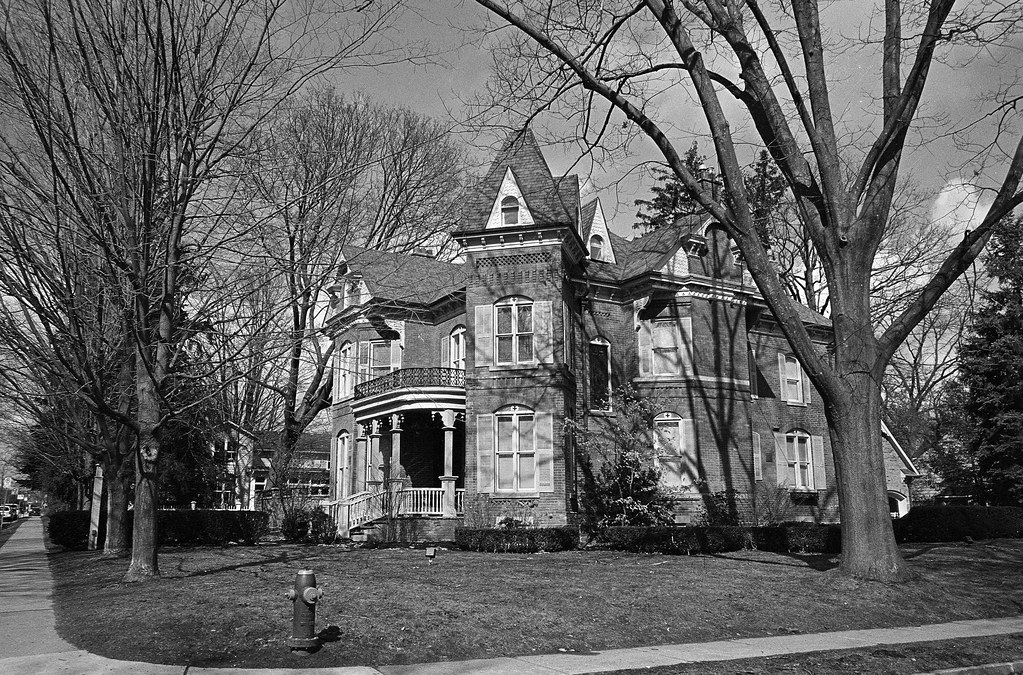
Minolta Maxxum 9 – Minolta Maxxum AF 28mm 1:2.8 – Ilford FP4+ @ ASA-125 – Pyrocat-HD (1+1+100) 20:00 @ 20C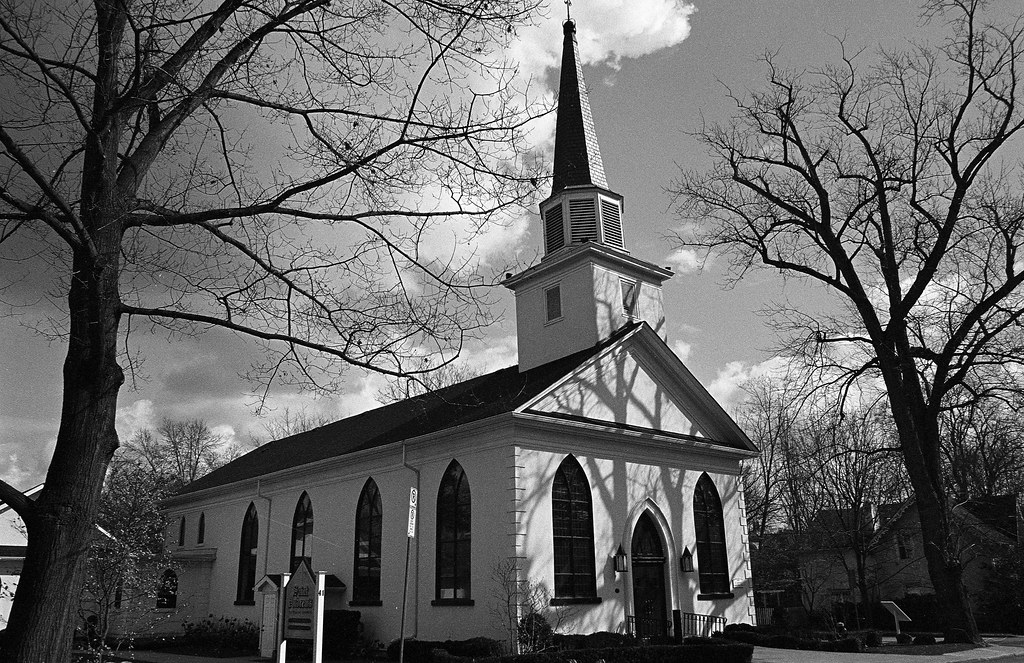
Minolta Maxxum 9 – Minolta Maxxum AF 28mm 1:2.8 – Ilford FP4+ @ ASA-125 – Pyrocat-HD (1+1+100) 20:00 @ 20C
Just after Canadian Confederation in 1867 the population of Oakville reached 2,000. And while Oakville stayed steady for much of the rest of the 19th-Century change came in the middle of the 20th-Century. While Ford of Canada had been around since 1904, in 1953 they decided to move their headquarters to Oakville and opened a brand new manufacturing plant. Soon employers like Ford, GE, Seimens, along with the aerospace and petroleum industries supplanted the colonial industries in milling, shipping, and shipbuilding. By 1962 the town of Oakville was re-incorporated and absorbed the historic villages of Bronte, Palermo, Sheridan, and the rest of the Trafalgar Township). And the seat of the Regional Municipality of Halton moved to Oakville in 1974 when the old county system was abolished in the region. Today the northern border of Oakville reaches to where the 407 crosses Trafalgar Road. Plus of late like the rest of southern Ontario has seen a major expansion through much of the formerly rural areas to the north of the town.

Minolta Maxxum 9 – Minolta Maxxum AF 50mm 1:1.7 – Ilford FP4+ @ ASA-125 – Pyrocat-HD (1+1+100) 20:00 @ 20C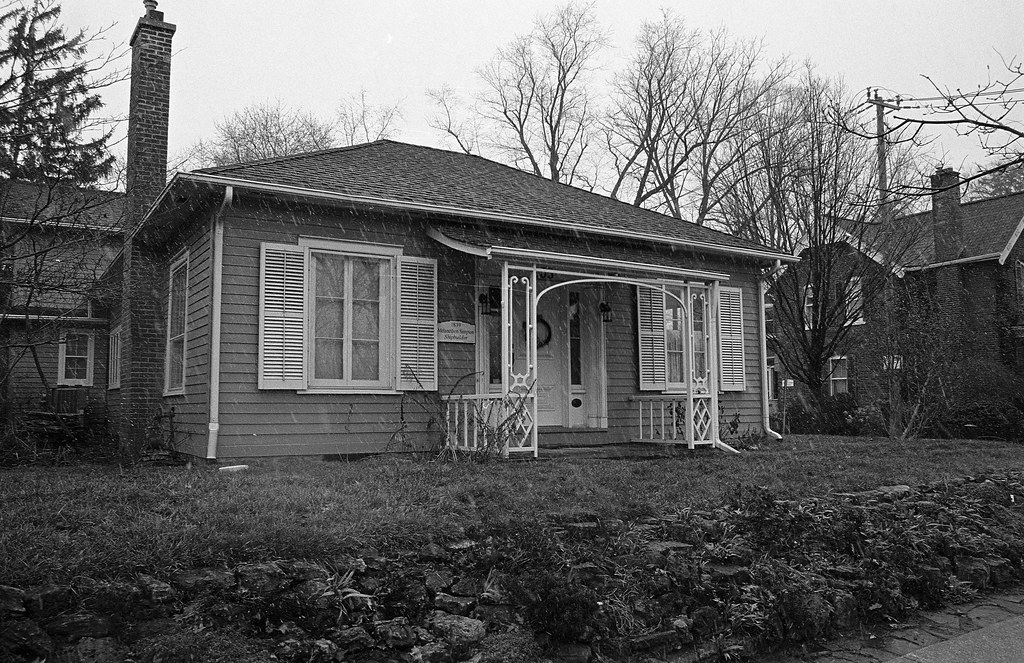
Minolta Maxxum 9 – Minolta Maxxum AF 28mm 1:2.8 – Ilford FP4+ @ ASA-125 – Pyrocat-HD (1+1+100) 20:00 @ 20C
Minolta Maxxum 9 – Minolta Maxxum AF 28mm 1:2.8 – Ilford FP4+ @ ASA-125 – Pyrocat-HD (1+1+100) 20:00 @ 20C
Minolta Maxxum 9 – Minolta Maxxum AF 28mm 1:2.8 – Ilford FP4+ @ ASA-125 – Pyrocat-HD (1+1+100) 20:00 @ 20C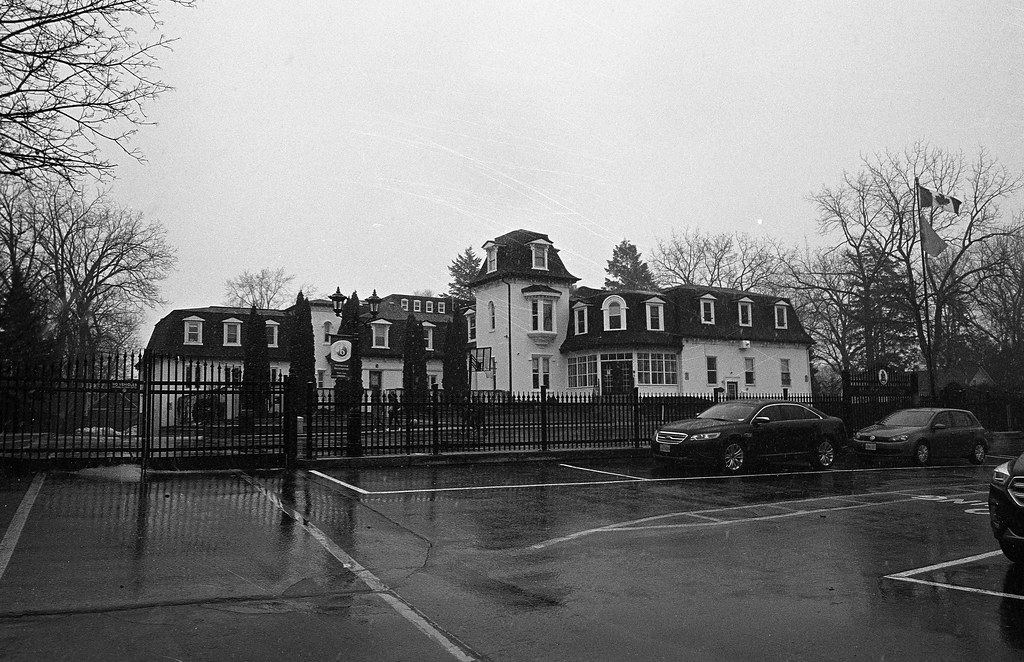
Minolta Maxxum 9 – Minolta Maxxum AF 28mm 1:2.8 – Ilford FP4+ @ ASA-125 – Pyrocat-HD (1+1+100) 20:00 @ 20C
Thankfully much of Oakville’s historic buildings have survived the expansion and changes. This is thanks to William Chisholm’s great-granddaughter, Hazel Chisholm Hart Mathews. Hazel would foster a deep commitment to the history of Oakville. And in 1930 restore the old Customs, which had sat abandoned since 1910. The Customs house would become her home. In 1951 at the death of her mother, Hazel and her sister Grace Juliet Chisholm Turney would become co-owners of the whole Erchless Estate. Hazel went on to become a founding member of the Oakville Historical Society and her efforts are well recognized by having the town’s original post office and the 1829 Thomas House being preserved to this day. Grace would pass in 1964 and Erchless pass to her son Montgomery, who not wanting to pay for the upkeep the 100-year-old estate sold the building which in turn became apartments. Hazel would deed the custom’s house to the town of Oakville at her death in 1978. A year earlier, the town would also purchase the Erchless Estate. Extensive restoration would commence on both buildings and in 1983 the Customs House opened to the public and in 1991 Erchless would follow. These two, along with the Thomas House and Old Post Office form the Oakville museum today.